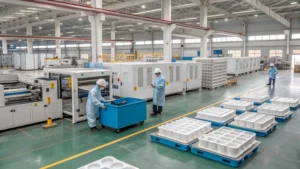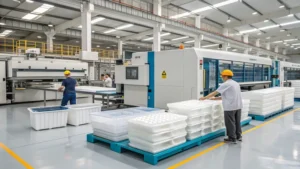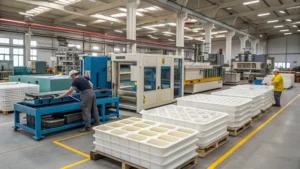
Vacuum forming is a versatile manufacturing process1 that heats a plastic sheet until pliable, then uses vacuum pressure to shape it over a mold, creating parts for industries like packaging and automotive.
Vacuum forming uses heat and vacuum pressure to shape plastic sheets2 over molds, producing cost-effective parts for packaging, automotive, and more, with material choice impacting success.
Selecting the right plastic is critical to achieving the desired performance and quality in 真空成形3. This blog post explores common plastics, key factors for selection, the process itself, comparisons to other methods, and practical tips to guide your decision.
ABS is the most commonly used plastic for vacuum forming.真
ABS is widely used due to its balance of strength, cost, and ease of forming.
真空成形は少量生産にのみ適している。偽
While often used for low to medium volumes, vacuum forming can also support higher volumes with the right setup and materials.
What are the Common Plastics Used in Vacuum Forming?
The choice of plastic in vacuum forming affects the part’s strength, clarity, and cost, making material selection a key step in the process.
共通 vacuum forming plastics4 include ABS, HIPS, PETG, PVC, Acrylic, and Polycarbonate, each offering unique properties for applications like packaging, signage, and automotive parts.

Here’s a breakdown of the most popular plastics:
アクリロニトリル・ブタジエン・スチレン(ABS)
ABS is strong, rigid, and impact-resistant, making it ideal for automotive parts, enclosures, and consumer goods. It’s easy to form and offers good dimensional stability.
ハイインパクトポリスチレン(HIPS)
HIPS is cost-effective with decent impact strength and rigidity. It’s commonly used for packaging, signage, and disposable products but has lower temperature resistance.

ポリエチレンテレフタレートグリコール(PETG)
PETG is clear, FDA-approved, and recyclable, with good impact resistance. It’s used in food packaging, medical devices, and displays.
ポリ塩化ビニル(PVC)
PVC is strong and chemically resistant, suitable for durable outdoor signage and construction materials. It can be trickier to form than other plastics.
アクリル(PMMA)
Acrylic offers excellent clarity and weatherability, perfect for signage, displays, and lighting fixtures, though it’s brittle and less impact-resistant.

ポリカーボネート(PC)
Polycarbonate is highly durable and heat-resistant, used in safety shields and machine guards. It’s costly and challenging to form.
| プラスチック | 強さ | Clarity | Temperature Resistance | コスト | 代表的なアプリケーション |
|---|---|---|---|---|---|
| ABS | 高い | Opaque | ミディアム | ミディアム | 自動車部品、エンクロージャー |
| ヒップス | ミディアム | Opaque | 低い | 低い | パッケージ、看板 |
| PETG | ミディアム | Clear | ミディアム | 高い | 食品包装、医療機器 |
| PVC | 高い | Opaque | ミディアム | 低い | Outdoor signage, construction |
| Acrylic | ミディアム | Clear | ミディアム | 高い | Signage, displays |
| ポリカーボネート | 非常に高い | Clear | 高い | 高い | Safety shields, machine guards |
What are the Factors to Consider When Choosing a Plastic?
Selecting a plastic for vacuum forming requires balancing several factors to meet project needs.
Key factors in choosing a vacuum forming plastic include part requirements, 生産量5, budget, formability, and environmental considerations6.

-
Part Requirements: Assess strength, clarity, or temperature resistance needs.
-
生産量: Vacuum forming suits low to medium runs (250-3000 units/year).
-
予算: Balance cost (e.g., low-cost HIPS vs. pricey polycarbonate) with performance.
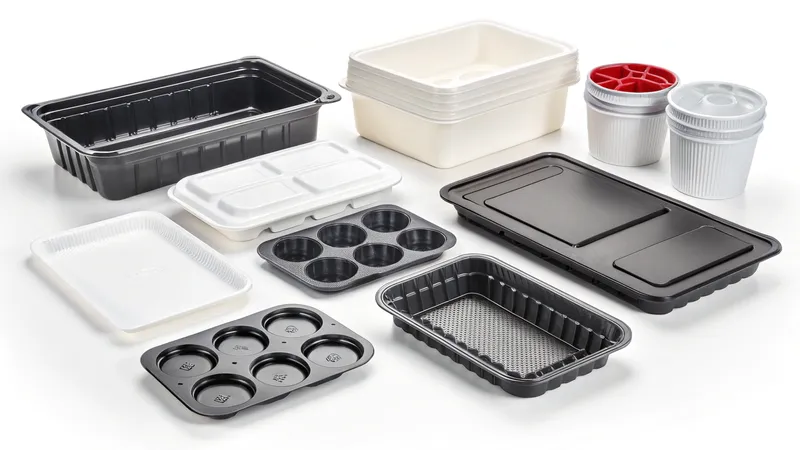
-
成形性: Easier plastics like ABS suit beginners; complex parts may need PETG.
-
環境要因: FDA-approved PETG works for food packaging.
真空成形プロセスのステップとは?
Understanding the process highlights how plastic choice impacts results.
Vacuum forming heats a plastic sheet, stretches it over a mold, applies vacuum pressure, cools, and trims it, with plastic properties7 affecting each step.
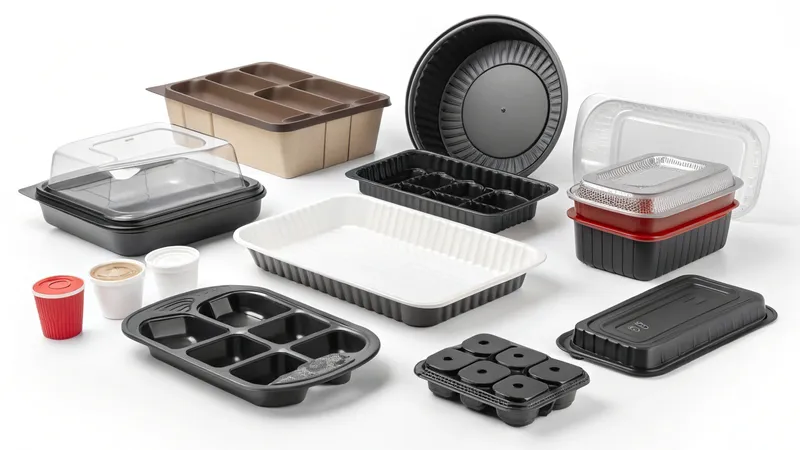
-
Stretching: The sheet is stretched over a mold (wood, aluminum, etc.).
-
真空アプリケーション: Vacuum pulls the plastic against the mold.
-
冷却: The part cools to set its shape, with timing varying by plastic.
-
トリミング: Excess material is removed, and finishing is applied.
Plastic properties like forming temperature and cooling rate influence outcomes.
How Does Vacuum Forming Compare to Other Processes?
Comparing vacuum forming to alternatives clarifies its advantages.
Vacuum forming excels in low to medium volumes and large parts compared to injection molding, which suits high volumes and complex shapes.

-
対射出成形: Vacuum forming is cheaper for low volumes; 射出成形9 offers precision for high volumes.
-
Vs. Blow Molding: Vacuum forming suits solid parts; ブロー成形10 is for hollow items.
What are the Practical Tips for Selecting the Right Plastic?
These tips streamline your decision-making process.
Choose a vacuum forming plastic by defining part needs, assessing volume, evaluating formability, considering environment, balancing cost, and testing options.

-
Define part requirements first.
-
Match plastic to production volume (e.g., HIPS for small runs).
-
Pick easy-to-form plastics if new to the process.
-
Consider environmental exposure (e.g., PVC for weather resistance).
-
Test plastics on a small scale if possible.
Explore resources like Toolcraft’s Material Guide.
結論
Choosing the right plastic for vacuum forming is essential for quality results. By understanding plastics like ABS, HIPS, and PETG, evaluating key factors, and applying practical tips, you can optimize your project. Vacuum forming’s versatility shines with the right material choice.
-
Learn about the essential steps in the vacuum forming process to improve your understanding of this efficient manufacturing technique. ↩
-
Discover the best types of plastic sheets for vacuum forming to ensure quality and performance in your projects. ↩
-
このリンクから、真空成形プロセスと様々な産業におけるその用途を理解し、製造技術に関する知識を深めてください。 ↩
-
Explore this link to understand the various vacuum forming plastics and their specific applications, enhancing your material selection process. ↩
-
Exploring this topic can help you optimize material selection based on your production needs. ↩
-
This resource will provide insights into sustainable practices in plastic selection for vacuum forming. ↩
-
Understanding plastic properties is crucial for optimizing manufacturing; this resource will enhance your knowledge on the topic. ↩
-
Learn about forming temperature and its significance in plastic processing to improve your production techniques. ↩
-
Learn about the differences between injection molding and vacuum forming to make informed production choices. ↩
-
Discover the unique aspects of blow molding and its applications compared to vacuum forming. ↩



